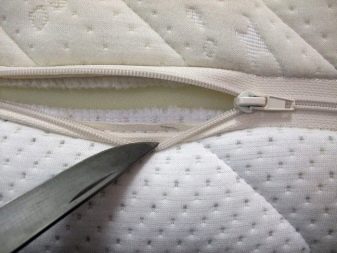Choosing and caring for a mattress cover with a zipper
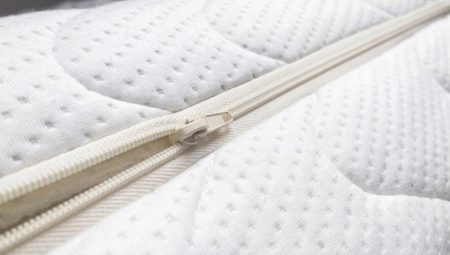
The cover is an important part that will protect the mattress from dirt. The removable design makes the cover easy to wash. In addition, the mattress topper will add comfort and coziness to the bed.
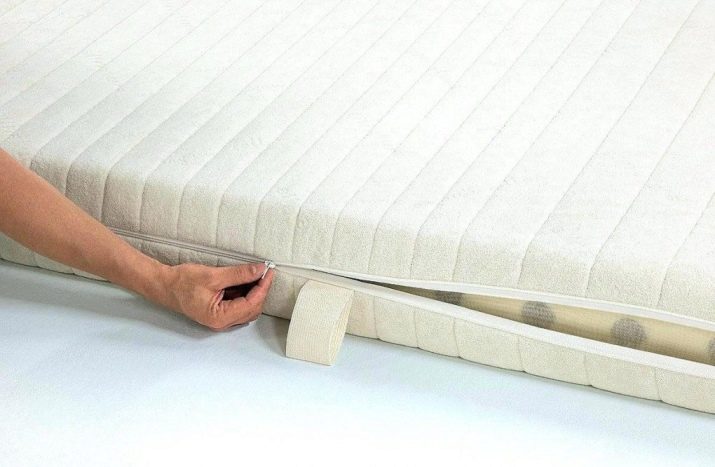
Peculiarities
The scope of the covers is very wide. They produce copies with a zipper for a mattress, based on different age categories.
Advantages of mattress toppers with a zipper:
- even after 10 years, the appearance of the mattress will not change, because the cover protects it from any damage;
- a mattress topper with a zipper for a child's bed provides protection from dirt;
- depending on the type of cover, the mattress can become softer or harder, which has a positive effect on the quality of sleep;
- fixes the sheets, so that they do not have to be corrected every morning;
- most covers with a zipper can be easily removed, do not require special washing conditions and retain their appearance for a long time, which makes it possible to postpone the purchase of a new mattress for several more years.


Unfortunately, there are also some drawbacks here - the price for such covers is higher than for any others, and the process of pulling them onto the mattress requires some effort.
Views
Covers are classified based on three criteria: specificity, purpose and protective properties.
Specifically, there are orthopedic and ordinary mattress covers.
- Orthopedic. They are used as a preventive treatment for diseases of the spine. Their peculiarity is in the presence of an additional layer of filler, which reduces or increases the firmness of the mattress.
- Regular. The peculiarity of such "pastel cases" is that they are made from different materials. Both natural, blended and synthetic fabrics are used.
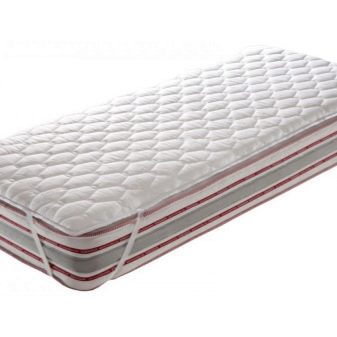
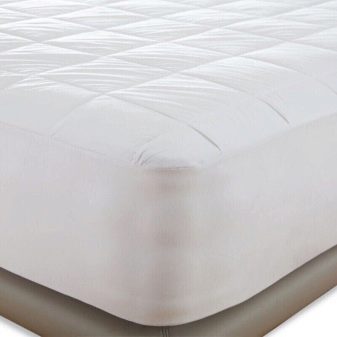
According to the purpose, covers for children and adults are distinguished.
- Baby. The fabric of these products is treated with an antimicrobial compound and is waterproof due to the cotton layer.
- Adults. Their main feature is in different sizes. They also have high moisture resistance. In addition, everyone can choose an option suitable for the level of rigidity.
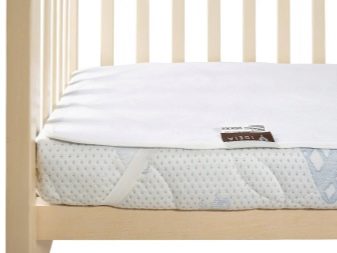
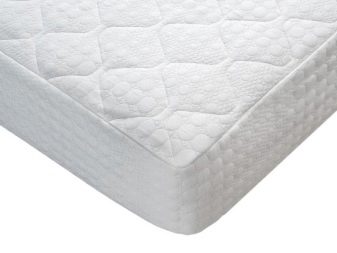
According to the protective characteristics, there are three types of mattress toppers.
- Waterproof. This property is ensured by the presence of special fillers that absorb and do not allow liquid to pass through. Basically, these covers are made from synthetics. In addition to being waterproof, these products have antibacterial and anti-decubitus properties. Mostly used for children or bedridden patients.
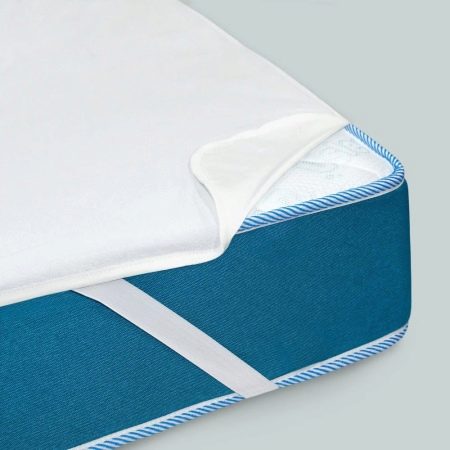
- Antiallergenic. This property is due to the use of a special material that does not allow dust particles to pass through. This option is ideal for allergy sufferers as it does not develop dust mites. In addition, the material is breathable and dries quickly after washing.
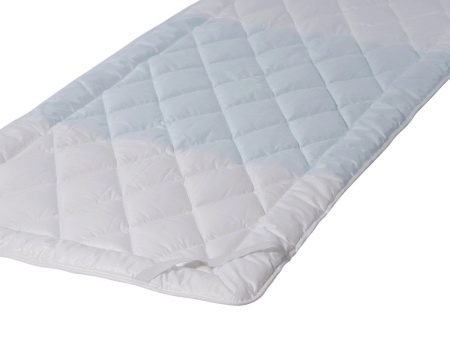
- Double-sided. This type is an oilcloth, which is equipped with fasteners on three sides. This greatly facilitates the process of putting the cover on the mattress. Also, thanks to the polyester fabric, the product is protected from abrasion and decay processes. At the same time, light raw materials provide moisture removal, ridding a person of sweat. Basically, this mattress topper is used to care for bedridden patients or used for children.
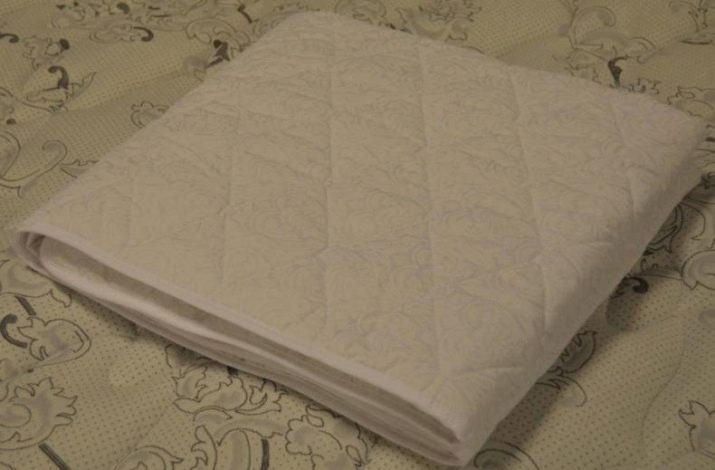
Dimensions (edit)
The size range of the mattress toppers is very extensive, so you can easily choose the option you want. There are sizes for both 1-bed and 2-bed beds:
- 120x60 cm - children's version;
- 80x200 cm, 90x200 cm - single options;
- 120x200 cm, 140x200 cm, 160x200 cm, 180x200 cm - for double beds;
- 200x220 cm, 220x240 cm - European standards;
- 200x200 cm - for square beds.
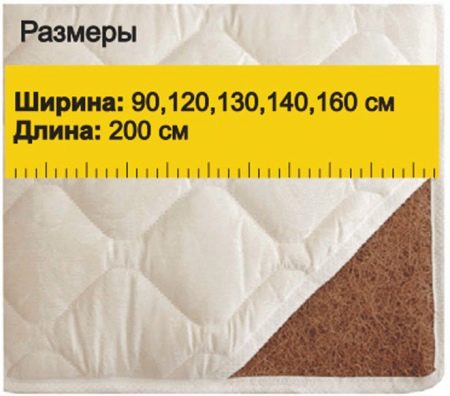
Materials (edit)
Different materials have different properties. It is very important that the fabric for the covers does not wrinkle or cause excessive perspiration. Mattress toppers are made from natural fabrics, synthetic and semi-synthetic. Of natural fabrics, wool, cotton, calico, satin are most often used. They keep the body from sweating and keep the mattress free from dust and dirt. "Textile case" made of polyester has a beautiful appearance. However, bed linen slips on such a surface. The use of polycotton gives the garments a high resistance to washing.

Such a mattress topper will not shrink or fade. However, this fabric has a significant drawback - low air permeability.
How to choose?
To choose a case that is suitable in size and properties, you need to take into account some of the nuances.
- Before going to the store, you need to measure the parameters of the mattress. In addition to the length and width, you also need to determine the height. It is better to choose a mattress topper with a margin of 2-3 cm.
- It is important to consider whether any of the family members have allergies, because natural fabrics are not suitable for allergy sufferers. In this case, it is better to focus on synthetic or mixed materials.
- It is especially important to be careful when choosing a cover for children. In this case, you need to carefully read the composition, as well as check the availability of quality certificates, because only high-quality products will ensure a healthy sleep for the child.
- If you need a mattress topper only in winter, you can purchase a removable cover made of natural wool. It can be easily removed. It doesn't take much storage space.
- When buying, it is important to consider the aesthetic properties of textiles. Tastefully selected "case" will decorate the interior of the room.
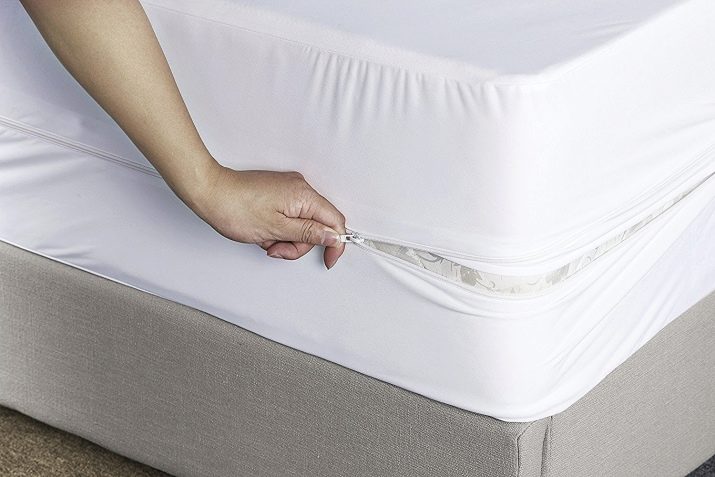
How to put on and take care of?
It's easy to put on or take off the zippered cover. Due to the fact that locks are sewn along the perimeter of the mattress topper, the process of putting on the mattress will not take much time.
Caring for the cover involves washing. By following the directions on the product labels, you can easily understand the intricacies of care. However, there are a number of important points to consider:
- you need to remove the mattress topper without shaking out the dust from it;
- jacquard fabric covers can only be taken care of by dry cleaning;
- the water temperature when washing in a washing machine should be no higher than 40 degrees;
- waterproof covers can be washed at any temperature;
- observe the rules of hand washing: the temperature must be strictly 30 degrees;
- liquid powder will help to avoid streaks on the fabric;
- drying is carried out in a horizontal position to prevent deformation;
- ironing is prohibited, as it can lead to shrinkage;
- You can dry-clean the cover no more than 2 times a year.
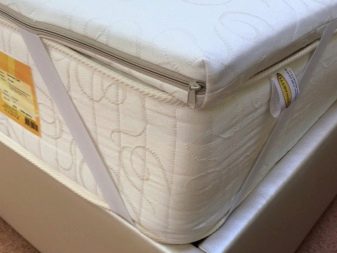
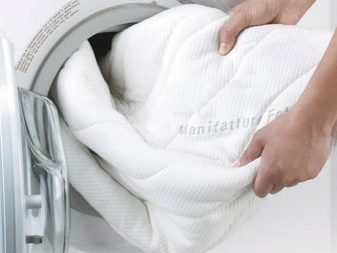
Do not neglect the selection criteria for the sake of economy, because a properly selected cover will significantly improve the quality of sleep.

